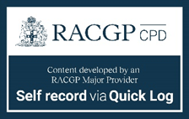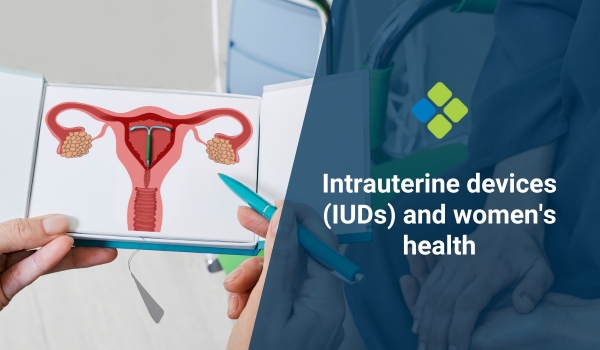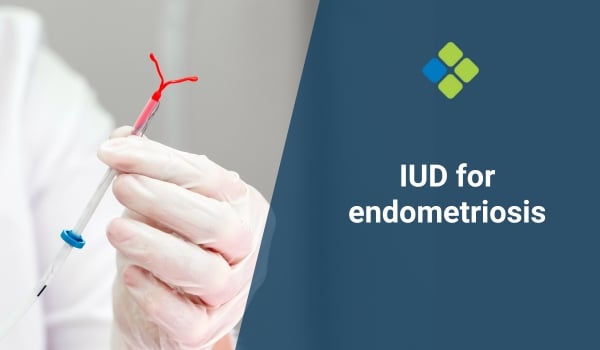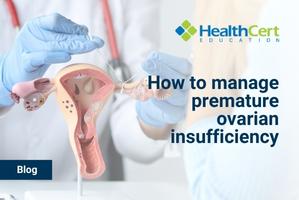Contraceptive options for female patients
Read about the contraceptive options available to your female patients, including efficacy, dosing, advantages, disadvantages, risks, and reversibility.
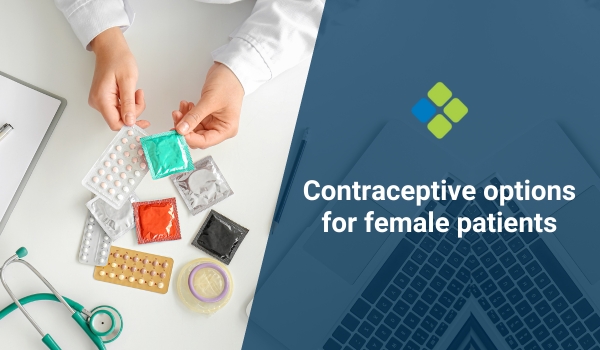
HealthCert Education
When considering different methods of contraception, the clinician should provide accurate information on efficacy, dosing regime, advantages, disadvantages, risks, and reversibility.
Learn more about this topic in the HealthCert online Professional Diploma program in Women's Health.
Barrier contraception (i.e., male and female condoms) is the most readily available contraceptive option and the only method which protects against sexually transmitted infections. Male and female condoms are around 82% and 79% effective at preventing pregnancy. Effective condom use relies on correct and consistent use.
Fertility awareness-based methods are only suitable for women who have a regular menstrual cycle and can identify the fertile phase of their cycle and avoid unprotected intercourse at this time.
Oral options include combined oral contraceptive pills (COCP) and progestogen-only pills (POP). COCP contain an oestrogen (e.g. ethinylestradiol) and a progestogen (e.g. levonorgestrel). These primarily act by preventing ovulation and have effects on the cervical mucus and endometrium. These pills are often designed to be taken for 21 days, followed by a 7-day hormone-free interval, during which withdrawal bleed occurs. A COCP can help regulate bleeding and make periods lighter and less painful. In addition, COCP can improve acne, premenstrual syndrome (PMS) and menopausal symptoms. Combined hormonal contraception (CHC) is also available in transdermal (patch) form and via vaginal ring. CHC is not suitable for everyone, particularly those at higher risk of thrombosis.
The POP works similarly to CHC; however, it is taken daily without hormone-free intervals and may be suitable for women who cannot have oestrogen. POP may also make periods lighter and less painful; however, it can result in irregular bleeding or amenorrhoea. All oral, patch and ring contraceptive options can be up to 99% effective when used perfectly; however, they are around 91% effective with typical use.
Women not planning pregnancy should be encouraged to consider long-acting reversible contraception (LARC) options. These options are more user-independent and include intrauterine devices (IUDs), implants, and injections.
The contraceptive implant releases a progestogen and works similarly to POP by preventing ovulation. The implant (e.g., Nexplanon) typically lasts for 3 years, is 99% effective at preventing pregnancy and can be inserted in a clinic by a trained clinician. Implants typically change a woman's bleeding pattern, which is often unpredictable.
The contraceptive injection (e.g., Depo-Provera, Sayana Press), a third progestogen-only method, is administered every 10–14 weeks, and some formulations can be self-administered. The contraceptive injection is 99% effective when used perfectly; however, with typical use, effectiveness is reduced to around 94%.
Intrauterine devices (IUDs) are categorised into two types – the copper IUD and the hormonal IUD. Copper IUDs available in Australia last for up to 10 years, and their primary mechanism of action is reducing sperm motility and preventing fertilisation and implantation. The hormonal IUD (e.g., Mirena or Kyleena) is effective for 5 or 6 years and releases a progestogen hormone (levonorgestrel). This acts similarly to other progestogen-only contraceptives to prevent fertilisation, implantation and sometimes ovulation. IUDs are over 99% effective at preventing pregnancy but require a trained medical professional to fit. The hormonal IUD may cause irregular bleeding, infrequent spotting, or amenorrhoea, while the copper IUD may cause heavier, longer, or more painful periods.
Sterilisation is a non-reversible method which should only be considered in women who have completed their family. Sterilisation includes tubal ligation and occlusion methods, which block or cut the fallopian tubes, preventing the passage of eggs. Sterilisation is over 99% effective at preventing pregnancy.
Primary care practitioners must be aware of each contraceptive method's efficacy, advantages, disadvantages and risks and be confident in empowering women to make the right choice for their reproductive health.
Dr Samantha Miller, MBChB
Learn more about this topic in the HealthCert online Professional Diploma program in Women's Health.
Engaging with this blog can help meet your annual
|
|
|
References
- Family Planning Australia (2023). Copper IUD. https://www.fpnsw.org.au/factsheets/individuals/contraception/copper-iud
- Family Planning Australia (2023). Hormonal IUD. https://www.fpnsw.org.au/factsheets/individuals/contraception/hormonal-iud
- Family Planning Australia (2023). Combined Hormonal Contraceptive Pill. https://www.fpnsw.org.au/factsheets/individuals/contraception/combined-hormonal-contraceptive-pill
- Family Planning Australia (2023). Contraception Choices. https://www.fpnsw.org.au/health-information/individuals/contraception/contraception-choices
- Sexwise (2023). Contraception. https://www.sexwise.org.uk/contraception
- University College London (2023). Contraception Choices. https://www.contraceptionchoices.org/
- Family Planning Australia (2023). Contraceptive Implant. https://www.fpnsw.org.au/factsheets/individuals/contraception/contraceptive-implant
- Family Planning Australia (2023). Progestogen-Only Pill. https://www.fpnsw.org.au/factsheets/individuals/contraception/progestogen-only-pill-pop

 1800 867 1390
1800 867 1390